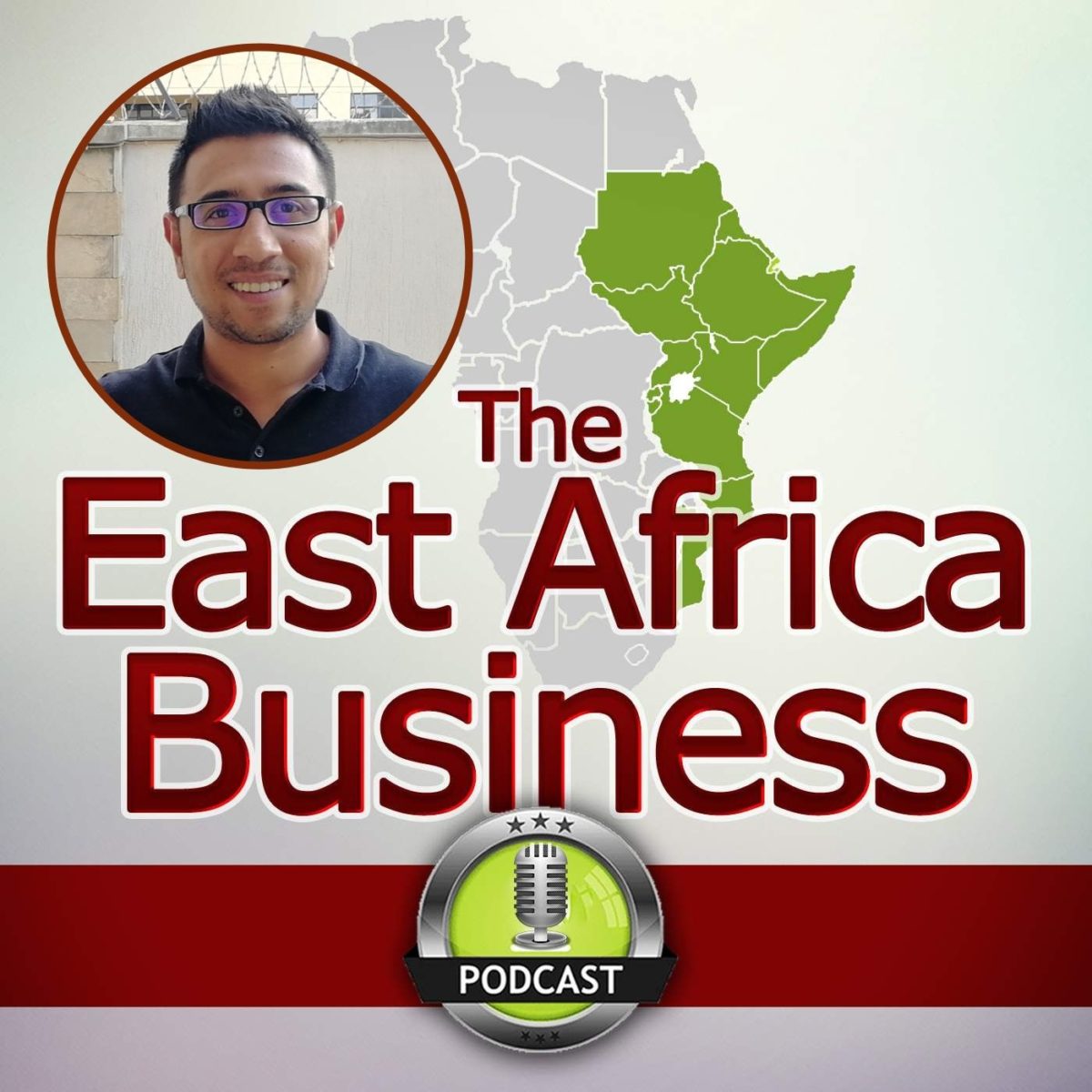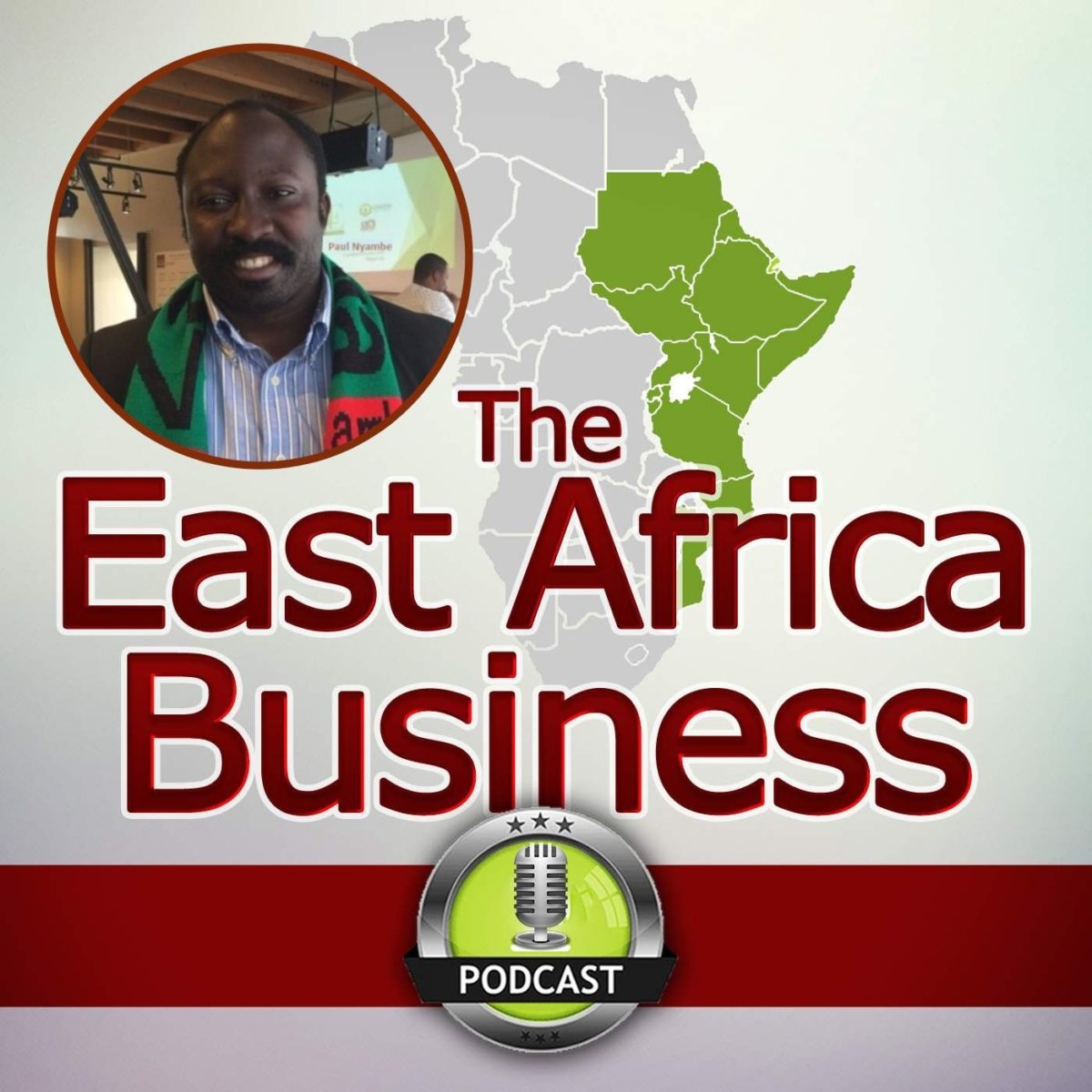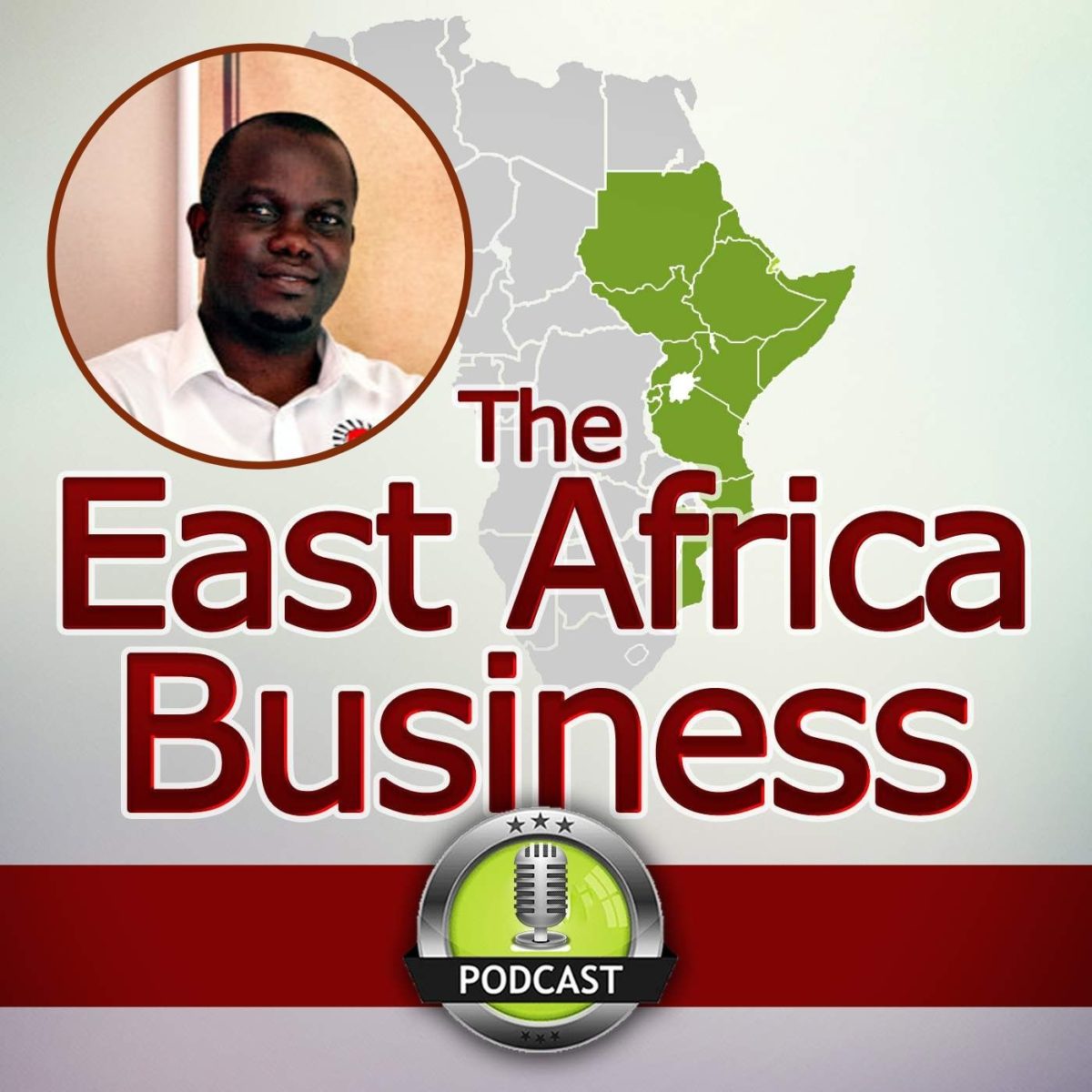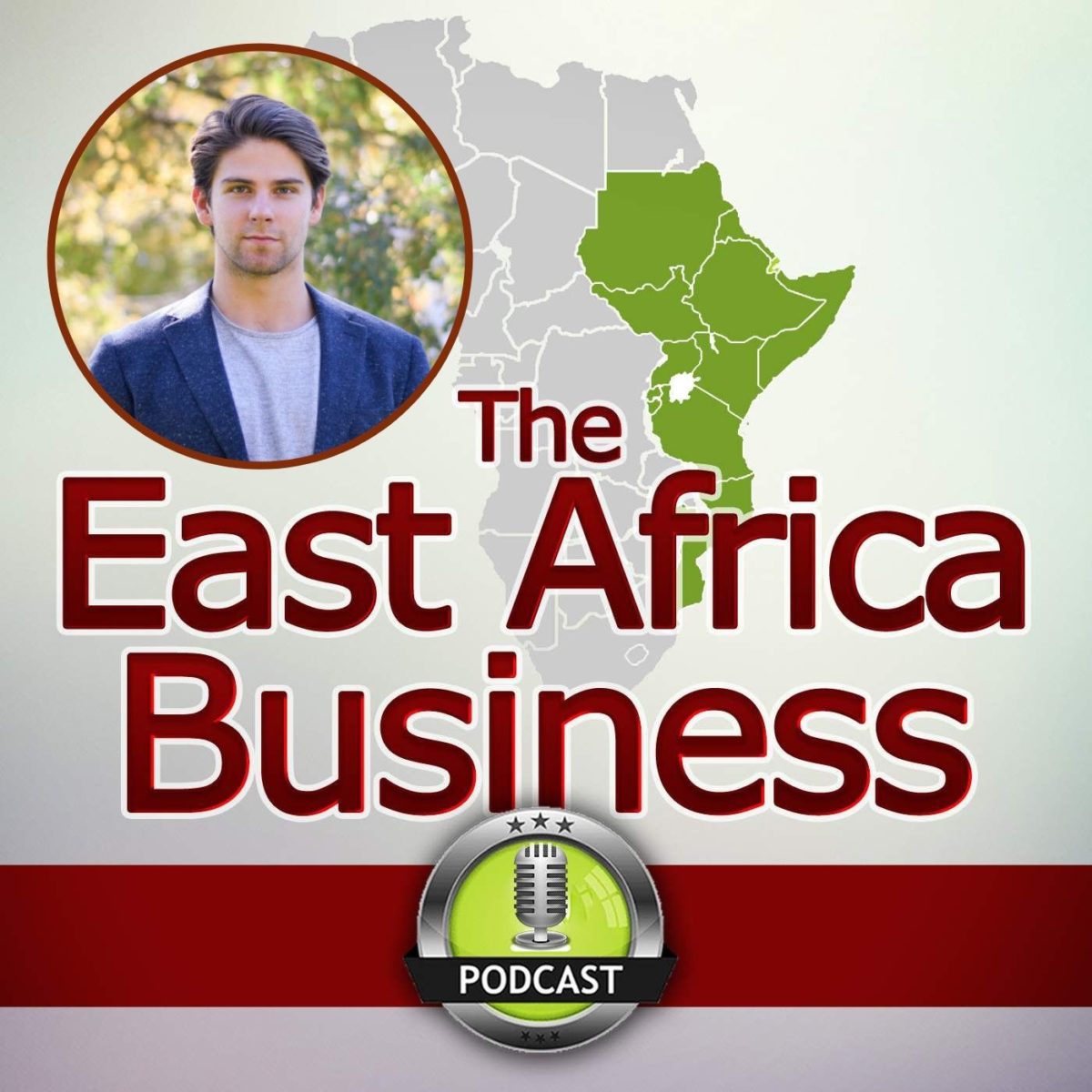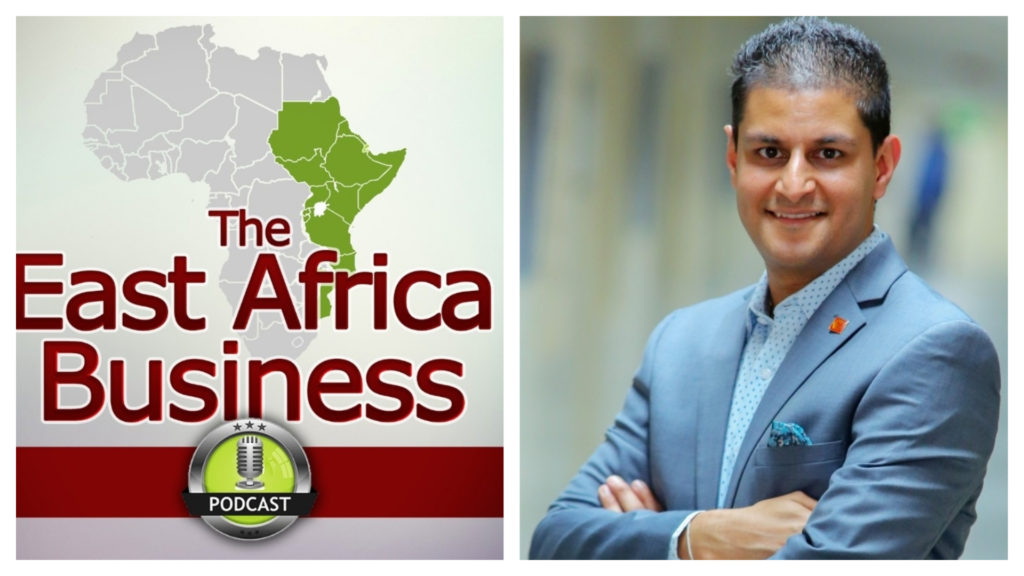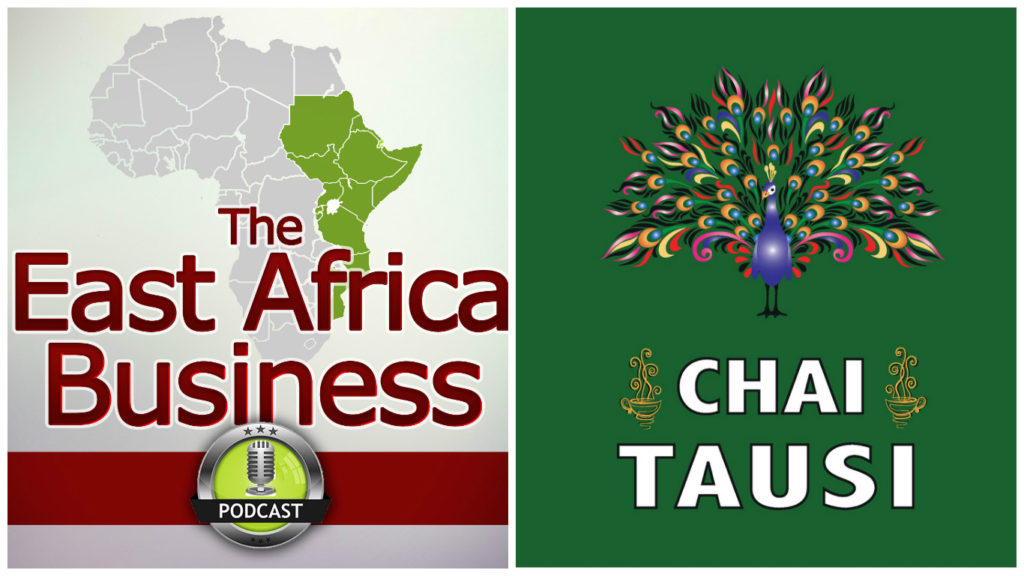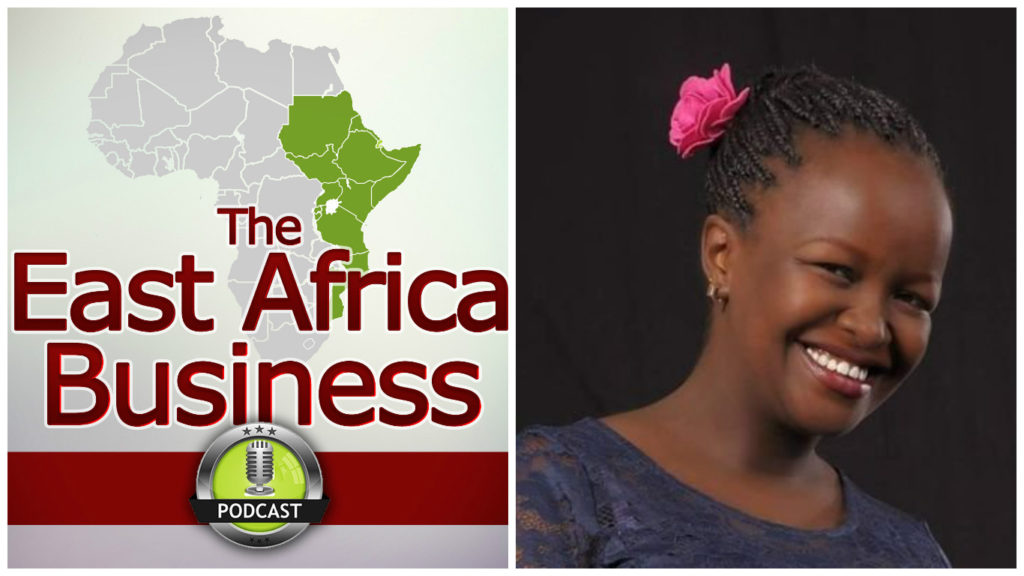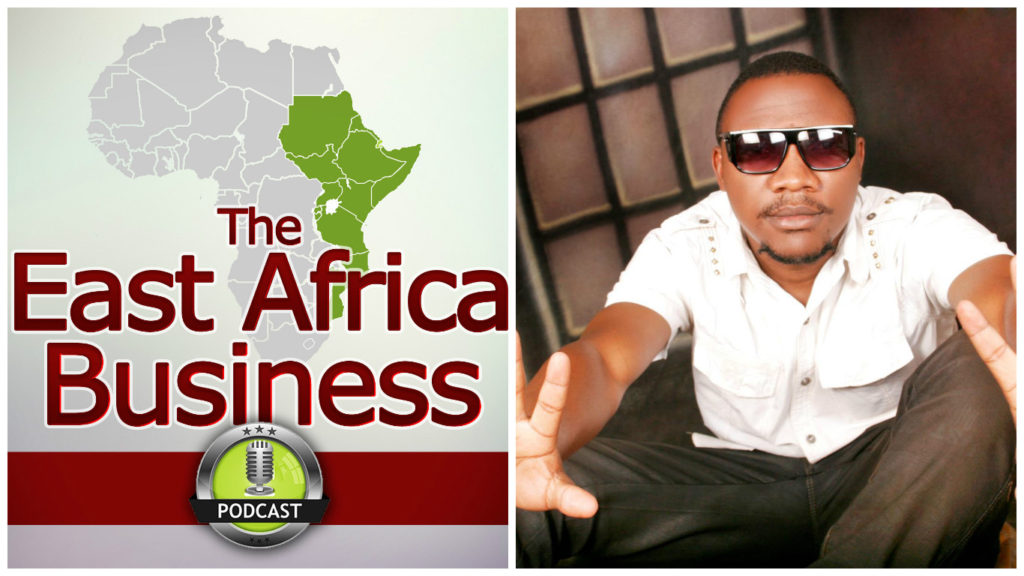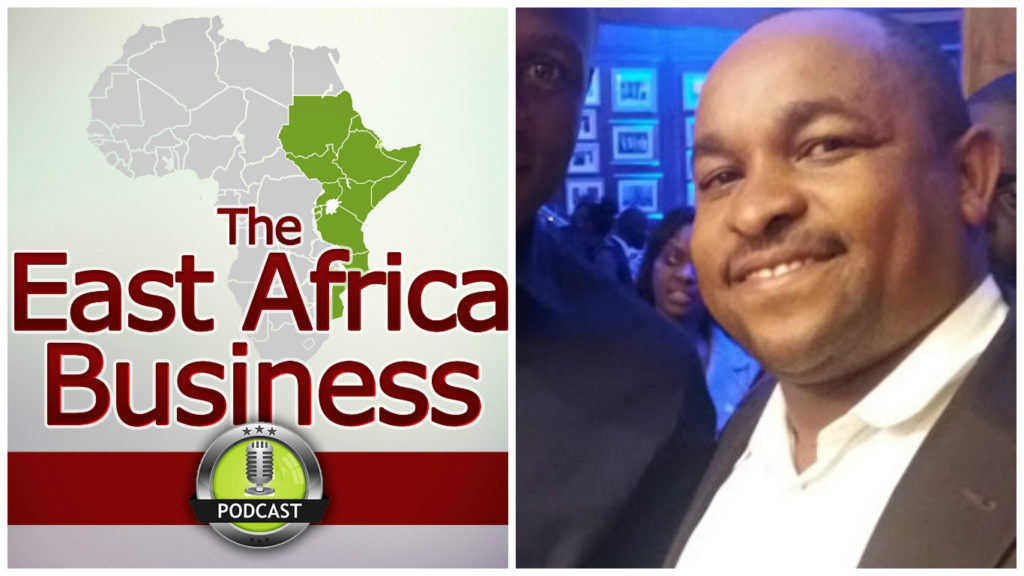Overview
This week we’re talking with two friends who have set up a business making socks in Kenya.
Both Vidyesh and Bishell grew up in Nairobi to entrepreneurial families, and after education in the UK returned home to begin a business.
They are also friends with Sumit, who featured in the board game cafe episode.
Vidyesh and Bishell decided on socks, as they felt there was a gap in the market and that by starting with a relatively discrete market (school socks) they could grow the business.
It’s a very interesting conversation that goes through the practicalities of building a manufacturing company in Kenya.
One of the challenges they state is, for example, the high cost of electricity, and its unreliability, but also the opportunities that come from getting a loyal customer base in an emerging economy.
Sign up below to hear whenever there are new stories and episodes released on the podcast
Transcript
Sam: 00:07 Intro.
Sam: 01:51 So we’re here today with Vidyesh, Vidyesh welcome to the show.
Vidyesh: 01:54 Alright, thanks.
Sam: 01:56 So to get started, can you tell us a bit about your business?
Vidyesh: 02:01 Yeah, so it’s a manufacturing business. We manufacture socks and hosiery products. We started the business about two and a half years ago. We sort of looked into the market and identified a sort of gap in the quality of products that were manufactured locally. And we thought we could do it a lot better than what was actually being offered in the market. And then we sort of went ahead and did a bit of market research and found that this is something that’s, something we can get into, something where there’d be a decent return for us and where we could do something better than the, our competitors are currently doing.
Sam: 02:39 Very cool. Okay. So mainly socks, is the thing you’re doing, like why did you choose socks of all the things?
Vidyesh: 02:46 I think it’s one of those products that everyone will always need so they’ll, I don’t think demand for it will ever die down. So yeah, but although that being said, we manufacture mainly for schools. So 90% of our production is catered for all of the schools in Kenya.
Sam: 03:05 90% of your production is for all of the schools in Kenya?
Vidyesh: 03:08 Basically the schools.
Sam: 03:10 Okay.
Vidyesh: 03:11 Based in Kenya, yea.
Sam: 03:11 Cool. How difficult is it to make school socks?
Vidyesh: 03:15 It’s not, I wouldn’t say it’s like the hardest thing. It’s just finding the right recipe or raw materials testing them and then offering that to the market obviously taking into account the price sensitivities. So of course you can go for like the most expensive raw material, but the market locally, domestically is very price conscious. So then you’ve got to turn around and find something that works and is affordable by the local people, by the local parents. So we went around and, you know, got a bunch of different raw materials, tested them, you know, checked out the qualities, found the one that we were happy with but also was affordable by the local market. And still we are, we do manufacture the highest quality product currently in Kenya.
Sam: 04:03 Perfect. Cool. Okay. So if we take a sort of step back. So have you always had an interest or have you had experience in the textiles industry? How did this come about?
Vidyesh: 04:13 Personally, you know, I mean, as a family, we’ve had businesses in textiles, we’ve had a, we had a textile mill early seventies, and then we then sort of as competition grew, became harder against you know, China and imports coming into Kenya we found that we weren’t competitive, so then we switched from, you know, manufacturing the fabrics into, and then we went into garments. And when I say we, this is, I guess my family. My dad and his brothers and then we’ve been in retail for garments and we did a lot of export back in the day as well.
Sam: 04:56 When you say garments, what does that mean?
Vidyesh: 04:56 You know, shirts, trousers. Yeah, yeah. And then Bashil’s family was also involved heavily in distribution of garments. So there is that background of being in sort of the textiles, garments industry. But in terms of personally, between the two of us, not really. We, I think both of us have always had an interest in manufacturing, in setting up business in East Africa. So we actually were, we both studied in the UK and then you know, I worked out there for a couple of years. Bashil, he studied there further on and then we moved back and we set the business up basically. But yeah, for us, I mean I think there’s a strong interest in manufacturing and not just specifically within textiles and garments but there is a wider interest within manufacturing.
Sam: 05:48 I should note we’ve got Bashil in the room as well and whose sat next to us.
Bashil: 05:53 Hi.
Sam: 05:53 Cool. So, that’s interesting, so you’re sort of, both of your families have had this heritage in producing garments in Kenya. Just out of interest, what were you, what were you doing when you’re in the UK? Were you in…
Vidyesh: 06:05 Yeah, so you want to go first?
Bashil: 06:07 I studied economics, university of Manchester after finishing, I lived in London one year. Did a bit of work experience Vidyesh came up with the idea. So we did both the research on it yeah, I decided to move. He moved a few months earlier. I moved after, three months after him. Yeah.
Sam: 06:32 Alright, so the idea for it came…
Vidyesh: 06:34 Once we were there.
Sam: 06:35 When you put, you weren’t living in Kenya at the time?
Vidyesh: 06:38 No.
Sam: 06:38 Interesting. Okay.
Vidyesh: 06:39 So yeah, for me, I was I went to school in the UK. I had been in the UK for almost 12 years. And then of course after school, went to university of Nottingham graduated. So I studied finance and then I was in banking for about four years. So I used to work for one of the big banks in the UK. It was fun. It was good experience. It wasn’t something that I was going to be doing indefinitely. It was, for us we’ve just always had an interest in going into like entrepreneurship or, and specifically manufacturing so…
Sam: 07:13 You’re like, let’s go ahead and make socks.
Vidyesh: 07:15 Yeah. Pretty much. You know, everyone’s going to need socks. No one’s going to stop buying socks. I mean actually socks are the most common Christmas gift in the UK. So you know, like it’s just one of those things that people won’t ever stop buying unless, you know, we start wearing alternatives. But yeah.
Sam: 07:34 Okay, cool. So let’s perhaps sort of talk a bit about the Kenyan sock market and so what’s the, what’s the current state of play in terms of producers here and yeah, let me just talk on the supply side first, what’s the current situation in terms of producers?
Vidyesh: 07:50 So I guess we can break that down into two segments. There’s the importers and then there is the manufacturers. Importers is a huge diverse sort of there’s many players and the businesses that import socks and hosiery products into East Africa with that, I think the biggest is something called ‘Mitumba’ which is basically second, yeah, second hand clothing. So the Kenyan government many, many years ago formed an agreement with the United States government where we would export garments, finished fabrics to the US but you know, as a bilateral part of that agreement, we were to import secondhand clothing from, from the US and then that slowly grew into Europe, China, India, Dubai. Actually Dubai, funny enough, is one of the biggest exporters of secondhand garments into Kenya and it’s not necessarily that there’s an agreement with Dubai, but it’s more, it’s a, as you say a hub of consolidation from all over the world and then it’s a good tap and it’s comes into West Africa and East Africa and Kenya. So we’ve got a huge secondhand clothing market and there’s a lot of socks there and then of course there’s the importers of socks that are then targeted at the middle class market. The middle, I think I should just…
Bashil: 09:15 Also, since many Chinese have moved here, so now instead of secondhand, there are many replicas coming from China as well.
Sam: 09:24 So for example, like if there’s a Ralph Lauren brand…
Bashil: 09:28 So they’ll be much cheaper than the second hand ‘mitumba.’.
Sam: 09:34 Really? The Chinese socks will be cheaper than secondhand?
Bashil: 09:36 Yeah.
Sam: 09:36 Really? Why is that?
Bashil: 09:36 They’re not paying duties or anything on it. It’s brought in illegally basically.
Vidyesh: 09:49 They’ll just fill up their suitcases when they come here and then offload everything.
Sam: 09:54 I see. And that can undercut?
Vidyesh: 09:57 Yeah. So for people who then bring it in legally playing, all paying all the duties, VATs you know, all the freight charges of course they can’t compete against something coming in as a second hand product or also illegally. So there is a, the market is restricted in that way, but yeah, there’s again, like I said, so there’s importers of all sorts of socks. So happy socks are in Kenya, there’s importers of people bringing in happy socks.
Sam: 10:24 What’s happy socks?
Vidyesh: 10:24 Happy socks is actually one of the, I’d say in the last four years it’s become a very big brand. They do very funky, colorful designer, not designer as in like labels, but you know, cool designs, lots of animation and very bright and bold and loud. So it’s actually a Swedish company which gets it socks manufactured in Turkey, but it’s a huge, huge, huge…
Sam: 10:54 So currently they are exporting them to Kenya?
Vidyesh: 10:57 Yeah, so not in a big way because there’s a very limited market. You know, like I said in Kenya you’ve got the low income, the middle market, and then the high end. So there’s a lot of price sensitivity. Those socks would typically be targeted at the high end and then the upper end of the middle, middle class market.
Sam: 11:14 So that’s the imported, what about in terms of local manufacturing?
Vidyesh: 11:20 So there are at least, I’d say a handful of manufacturers five to six of us. We, very few of us will be doing socks for the mass market and that’s because it’s very difficult to compete against the ‘mitumbas’ they are, you know, there’s stuff coming in illegally and also the very cheap, very poor quality products and that’s because of course there’s challenges with logistics. We’re bringing in our raw materials from a country that’s far, far away and then you’ve got a lot of bureaucracy in Kenya, which sort of makes it harder for us. And I guess the other biggest, the very huge important factor for us is the cost of our electricity. So if you compare Kenya to Ethiopia and Uganda and Tanzania our costs are almost double relative to Ethiopia. Yeah. It’s higher than Ethiopia it’s higher than Uganda so for us to then manufacture and compete against some of the varying low cost socks which are coming in is almost impossible.
Sam: 12:38 What percentage of the cost of the sock is electricity? Is it, I mean, is it like 5% or is it, is it relatively significant?
Vidyesh: 12:46 Again, it varies based on the capacities of the factories that are the scale of the factories. But you know, typically I would say actually it’s way high. It’s about 15%.
Sam: 12:59 15%?
Vidyesh: 12:59 Yeah.
Sam: 13:01 The cost of electrricity?
Vidyesh: 13:01 Yeah.
Sam: 13:02 And so if you were in Ethiopia, that would be 7.5%.
Vidyesh: 13:08 Yeah. Or less even. But yeah, a lot lower than us. And you know, that for us is a huge thing. Again the other challenge, and like I said, you know, the logistics side of it historically you could import a container of your raw materials from, you know, anywhere in the world and it would dock at, the ship would dock at Mombasa port, and then you can put your container onto a truck and bring it directly to your factory, which was, it was done within five days. So five days from landing at the port, it would be in your factory, whereas now, yeah, three to four weeks.
Sam: 13:49 Three to four weeks? Why is that?
Vidyesh: 13:49 Yeah. So it’s a double edged sword, this one. But basically, there was an SGR that was built.
Sam: 13:58 This is the train?
Vidyesh: 13:59 The railway. Yeah. And of course for it to become feasible, there needs to be volumes moving on it. And so there was a blanket rule that was placed by the government that said any importers what not. Yeah. Any importers outside of Mombasa. So Nairobi, any other place outside of Mombasa, have to put it on the SGR. Now the SGR is, you would think that it would be cheaper than, you know transporting the containers on a truck but it’s actually a lot more expensive. So because of these certain factors we are slightly uncompetitive relative to manufacturers, you know, based in Asia other parts of Africa.
Sam: 14:47 I mean, I imagine that would have been, they would like the government or whatever would have known. Okay. If we’re going from a truck system to a train system, there’s going to be a bit of a shift in prices, is it always going to be the case or is it that there just needs to be other infrastructure?
Bashil: 15:07 They’re trying to recover the cost of building the SGR.
Sam: 15:09 Okay. So they’re just saying regulation, you must do this and the price is as is so they can recoup the cost. The people who are feeling the pinch are…
Vidyesh: 15:20 Everyone who’s importing anything and yeah, because for us, again a lot of the raw materials that we use are not manufactured locally in Kenya so we don’t really have an option so we have to import it, and then we obviously manufacture here, but I think for us, the two biggest, those are like our…
Sam: 15:42 The two big challenges.
Vidyesh: 15:43 Yeah. Of course with the delays, drops in production in the factory and…
Sam: 15:54 Yeah. Is this a bit more unpredictable?
Vidyesh: 15:57 Yeah, I think, like I said, the bureaucracy and red tape that is, it’s kind of the…
Sam: 16:04 Yeah. Right. Well, those are some fairly significant challenges. Talk about talking about the upside, like what’s the, what’s the positive thing?
Vidyesh: 16:12 So of course like doing business anywhere in the world I think is fun. It’s exciting, there’s a lot to learn you know, it’s always it’s nice to kind of make changes in other people’s lives. So, you know, we’ve got a staff of 35 people and they, they have families that depend on them. So it’s always nice to know that, you know, you’re kind of indirectly improving other people’s lives and of course for us, you know, started from where we are and we’ve grown and grown and grown. So it’s actually a very exciting journey for us. And along that journey we’ve learned a lot and understood the market and you know, understood how to get better at what we’re doing you know, of course without compromising the quality of the product. So for us it’s always we want to manufacture something that’s going to be very, very good, if not the best but always sell it at a very affordable price to the, to the mass market, to the local market, our target market basically.
Sam: 17:08 And how, how big do you think this market is?
Vidyesh: 17:11 I wouldn’t say it’s very big because like I said to you, our we have, we don’t have a very big factory, but 90% of our production is purely for schools.
Sam: 17:20 I’m not quite sure what the best way to like gauge capacity, but like how many socks are you producing in a year. What’s the, what are some of the ways in which you…
Vidyesh: 17:30 In a in a day we do again, it depends on the type of socks that we manufacture, but typically we could potentially do about 2,400 pairs of socks a day.
Sam: 17:44 Okay.
Vidyesh: 17:44 Yeah.
Sam: 17:45 Right. And those are, then maybe we’ll get more into that, but okay. You’re current 2,400. Is that after the, my impression of manufacturing is that sort of capacity goes in steps rather than in a straight line. Is that, is that kind of your capacity or is it something where you could quite easily?
Vidyesh: 18:06 So for us, we’re almost running at 95% of our capacity on those numbers. We would, we are looking at bringing in new machinery and then of course we’ll be able to do a lot more, but also that helps us because then we get economies of scale. So the more machinery we have, the more output we get and therefore our unit costs also drops. So again, I wouldn’t say it’s like, it’s a simple equation where the bigger you grow, the lower your cost becomes. It does kind of stagnate at some point before us were acquired, you know we’re in the infant stage so to speak. And so we’re finding that sweet spot where the more output we get, you know, the more we can split our costs across that and become a little bit more competitive, but not enough to still fight the illegal imports and the imports and all sorts of stuff.
Sam: 19:00 Okay. What sorts of startup capital was necessary to, to get this going? You don’t, you don’t need to sort of say specifics, but just rough figures.
Vidyesh: 19:12 We put in about, I think $750,000 into the entire project. Yeah. And then of course now it will be, as we grow, we’ll be putting in more and more. Yeah.
Sam: 19:23 And so you’ve sort of said you’ve got the double whammy of high quality and affordable price. Does that mean your margins are quite thin?
Vidyesh: 19:35 Yeah, right now our margins are thin because we’re still you know, our brand is still quite new in the market, so we’ve got to stay lean. We’ve got to keep our prices low so that people, you know, sort of accept the product. And then with time, I think once it’s been accepted, they will turn around and say, okay, we’re confident in the plan will buy it. So the price sensitivities will remain, but our penetration will be higher basically. And, and then there’s a knock on effect into the neighboring countries of Uganda and Tanzania.
Sam: 20:11 Okay. How do you brand yourself?
Vidyesh: 20:14 H and F.
Sam: 20:14 H and F?
Vidyesh: 20:15 H and? F, yeah. So we’ve got a couple of other brands in the pipeline as we’re growing, we’re bringing in new machinery. We are going to be launching a couple of new designs, different types of socks. Like I said, predominantly right now we’re just doing schools. So our school brand is H and F, but you know, when we do launch our new products in the pipeline, they are going to be new brands coming in for those. Yeah.
Sam: 20:37 How did you land on H and F as your?
Bashil: 20:40 It’s our grandparents initials.
Sam: 20:42 Your grandparents are friends as well?
Vidyesh: 20:44 They might’ve been, we’re not too sure, I don’t think so. I don’t think they are. Yeah, we are. We are at some, there is some connection between the two families but yeah,
Sam: 20:54 But why did you choose your grandparents initials and not your initials?
Vidyesh: 20:59 So again, okay, now I guess it’s an important point that we, like we discussed earlier, our families have been in business in Kenya for, you know, mine since the 1940s and yours around about the same time before that. Yeah. So because of that there is people, I wouldn’t say people, but a lot of businesses are aware of who our families are. And so we wanted to capitalize on that from the marketing point of view, from sort of market penetration point of view because it’s easy to leverage on that and you know, and get cross sells and new introductions. So that was kind of the thinking rationale behind…
Sam: 21:47 Anytime your grandkids will be using your initials. Okay. So what, so you’re currently making 2,400, you have the ability to make 2400 pairs of socks a day. What happens when they leave the factory? Where do you…
Vidyesh: 22:09 Yeah, mainly it’s retailers and distributors and wholesalers and then they turn around and sell it on to, so the retailers of course and customers, but the wholesalers will then, it might go to another wholesaler or another distributor by the time it gets to retail, but ultimately we’ll end up at a retailer.
Sam: 22:31 Retail is just like a shop?
Vidyesh: 22:31 Yeah.
Sam: 22:35 Has it been straightforward to get into these retailers?
Vidyesh: 22:39 It was difficult in the beginning. The market in Kenya is not one where, you know, if you offer something that’s cheaper at a lower quality, sorry, at a better quality it’s not necessarily that they will go for it. So like I was saying to you earlier, our product is the cheapest in the market right now and it’s the best quality. So we’re offering a Mercedes Benz at the price of a Toyota but you know, the market here is a bit different in the sense that they’re skeptical. So it takes time to sort of assure them. And it’s not necessarily that it’s the owners of the businesses that we’re selling to. It’s more the end market user.
Bashil: 23:24 The reason why is because it’s very seasonal. When school starts, parents by socks for their kids for school, so when they go to shop, the process of them going to that shop and it’s really hard for the shopkeeper to explain to them that this is a better quality. It the one that’s at the shop I get at that it’s really difficult for them to explain which one to go for.
Vidyesh: 23:51 They’re used to seeing a particular brand, which they’ve seen there for years, and then they’ll just pick up that brand and go with it. The other thing is also, you know we use materials that are a lot nicer, a lot nicer to feel, they’re more comfortable to wear, but like Bashil said, you know, they don’t always have time to showcase or explain that, but equally, you know, when, when they might pick up our socks, again and compare it to someone else’s but it’s not, it’s, it’s the decision. The thought process is in, you know I’d say a very normal one where you know, you see something that’s, it feels nice if cheaper and you’d go for it. So because of that, it was very difficult for us in the beginning. We also did contract manufacturing, which meant we couldn’t launch our brand immediately after we started the business. So we did a contract manufacturing for about a year.
Sam: 24:54 Why did you decide to do that?
Vidyesh: 24:55 So for us it was good it was one of those things where anything and everything that we made, we’d sell it to one buyer and they would pick up everything that we made in our factory. So it was a good sort of start, a good boost for us. Of course then we faced our own internal challenges and we said we need to get our brand recognized as well you know, customer concentration, there’s all sorts of risks that come along with them having one big customer. So we wanted to just diversify our risks and we said that it’s now, we’re now ready to sort of go in with our own brand and sort of hit the market hard.
Sam: 25:36 How did your buyer take that?
Vidyesh: 25:38 They still buy from us, but they, it’s now just on a purchase order basis as opposed to, yeah.
Bashil: 25:45 Theres a lot of product awareness.
Sam: 25:49 Yeah, I’d say it must be a difficult one because as well, I mean even though the socks are going to be worn by the kids, that’s right. It’s still the parents who are going to making those decisions. I mean, stressful, buying uniforms and stuff for your kids, I imagine is very stressful experience and your side, Oh my God. Just like make this as easy as possible. I’ll have what I had last year, get in, get out. I’m interested in how you try and break that, how you try and break that mold. Like can you go in and do like demos at schools or like what, what’s what are some ways to try and break that?
Vidyesh: 26:27 I think, I think that is one of the ways that we could do it or anything is then we are, we’re kind of limited with time and we’d be too stretched out if we went to individual schools trying to sell the product, we will be sharing the products to the students who may not necessarily have a say but with time what’s happened is that the, like I was telling you we’ve leveraged on our network to give that assurance of a very good quality product. They will then turn around and push our product. So the historic way of kind of selling the product without, you know, really taking time to teach or educate the parents on what, what, what’s available. They starting to do that slowly. And then, you know, the first time a parent buys a sock you know, they’ll see that it lasts a lot longer. It’s a lot more comfortable. So then they’ll buy it again. And what we found then is that the more shelf space we were getting, the more people would, they’re getting, they’re warming up to our brand.
Sam: 27:41 Signals?
Vidyesh: 27:42 Yeah. It’s still difficult, you know, having said that, you know, even though we’ve got now bigger market share than we had last year, it’s still difficult for us to then fight the big guys because their brands are very strong in the market. They’ve been in the market for 20 years or so. So you know, it’s, there’s always that challenge when a newbie comes in to sort of persuade the consumers to shift but with time and with a bit of education that will change. The thing is, as a, as a new business, we don’t undertake any marketing, you know, adverts or commercials it’s quite expensive. We try and stay as lean as possible. So we’re just letting the brand and the quality speak for itself but yeah, it’s like Bashil said people are accepting it. It’s getting better and we’re seeing that and it’s, it’s, it’s getting better.
Bashil: 28:42 The main season in December, January, so about, I think two, three seasons.
Sam: 28:46 School socks were you’re sort of first thing, do you think you’ll soon start going into other types of socks?
Vidyesh: 28:58 Yeah, I mean we’re definitely gonna try it wouldn’t be a big market for us.
Sam: 29:03 What would it be?
Vidyesh: 29:05 So socks for the mass market. So for if you go to like you know, high end retail stores, we might have a couple of very high quality socks in there, but we won’t be able to manufacture something that will be bought by the mass market, you know, anyone that needs socks, we’ll be like, Oh, we’re going to buy H and F socks. No. That’s going to be very difficult, purely just from a price point of view you know, even a difference of 10 shillings for a buyer here is, it’s a game changer.
Sam: 29:38 Is the plan to sort of do do socks until we’ve nailed it and then go into other product lines or we begin to look at other product lines before you’ve…
Vidyesh: 29:49 Yeah, we’ve actually already started looking at other lines. It’s just the thing is we don’t want to jump too quickly. We want to make sure that this business is doing as well as it can and then it’s kind of becomes a cash cow for other businesses that we invest in.
Sam: 30:08 What’s you don’t have to disclose, but you, how do you think about what you do next? Do you think about growing trends in fashion or do you think about the types of products that people buy as incomes rise or similarities in the production process to socks?
Vidyesh: 30:26 Not really, actually. It’s just for what the market requires.
Sam: 30:30 How do you gauge that?
Vidyesh: 30:32 Just understanding the market. So market research, basically speaking to people, how they’re spending the monies. I mean simple things. Just like us last week I was speaking to a couple of guys who were painting a property ours and yeah. It’s like asking them, you know, where do you spend most of your money and how much do you end up saving? And from what you save, what are you spending your money on? So just understanding the, what striving consumerism or and if there’s a better word to use, yeah.
Sam: 31:00 Aspirational?
Vidyesh: 31:00 Yeah.
Sam: 31:03 Okay. So you basically based on that, we think that…
Vidyesh: 31:06 If there’s a gap in the market somewhere where we can do something a little bit better than what is being offered, then that’s something that we would, yeah.
Sam: 31:14 Okay. In terms of what makes a better sock, like what are the, what are the characteristics you mentioned, you mentioned raw materials.
Vidyesh: 31:24 Yeah. So I mean when you wear socks, you, for anyone that wear socks, you know, you don’t want to wear socks that get sweaty. Yeah. You want something like, yeah. And it’s gonna last, no marks on your legs.
Sam: 31:39 I hate marks on my legs, yeah. How many sort of distinct processes are there to go from raw material in to socks out, is it like first you do this then this then this then you’ve got sock, like how many of those things are there?
Bashil: 32:00 So first the machine spins the yarn to produce the product.
Vidyesh: 32:05 Knitting.
Vidyesh: 32:07 And, and it goes, so, Oh yeah, it’s all open. Then it gets linked with another machine, after that it gets checked, if there’s any coils or like if it’s perfect, the yarn is perfect. And after that, it gets boarded and steamed and after that it gets packed.
Sam: 32:32 It gets steamed?
Bashil: 32:32 Yeah, for the shape.
Sam: 32:36 Oh, okay. So the same idea.
Vidyesh: 32:37 So the fibers in the socks then basically you get sort of glued together and this improves their elasticity and also the life of a sock. So it doesn’t loose shape very quickly. So yeah, there’s a…
Bashil: 32:54 Many companies have this process.
Sam: 32:56 Many companies do you have that process? And that means that they are…
Vidyesh: 33:06 Say cheaper.
Sam: 33:07 Elastic. And what is the raw material? Is it wool?
Vidyesh: 33:11 No. So you’ve gotten many different types of raw materials. You can have, wool is one that you couldn’t use. You can use cotton, you can use nylons, you can use polyesters, you know, you can use acrylic yarns. So there’s a lot of synthetic yarns, which are the polyesters, nylons, acrylics, and then you’ve got the natural ones, which are cottons and you know, you’ve got bamboo and you’ve got…
Sam: 33:37 Bamboo?
Vidyesh: 33:38 Yeah.
Bashil: 33:42 It’s like really, it’s one of the best right now.
Vidyesh: 33:42 Yeah. So we are, we’ve actually just trialed bamboo socks and we’ve got some really nice socks that we made for the two of us with bamboo yarn.
Bashil: 33:50 It’s expensive.
Vidyesh: 33:52 But it’s also more…
Bashil: 33:53 Really good quality.
Sam: 33:54 So they just sort of take, cause bamboo’s quite hard, do they sort of soften down?
Vidyesh: 34:01 Yeah, yeah. Yeah. So they break down they pulp it up and then they from fibers, then they spin it into yarns. The thing is with bamboo, you get very short fibers. Whereas like with cotton you can have really long fibers. So harder to make bamboo socks. It’s not necessarily the shortest, but it’s just it’s a harder yarn to make.
Sam: 34:25 Okay.
Vidyesh: 34:25 Yeah.
Sam: 34:26 And what are the advantages of bamboo socks?
Vidyesh: 34:27 So, you know, like the world is becoming more and more environmentally conscious. So for example, cotton requires more water to cultivate. So the same amount of cotton if you take a kilo of cotton yarn and kilo of bamboo yarn, bamboo yarn requires less land and less water.
Sam: 34:48 Okay.
Vidyesh: 34:50 Yeah.
Sam: 34:50 In terms of the, the wearer,
Vidyesh: 34:54 It’s just like cotton, if not better. Yeah. You can’t really tell like, if you give it to someone.
Bashil: 35:00 It absorbs sweat much better.
Vidyesh: 35:00 Yeah.
Bashil: 35:00 It’s breathable.
Vidyesh: 35:04 Yeah. If I gave you a pair of socks between cotton and bamboo and I didn’t tell you what was what, I don’t think you’d be able to tell the difference. But they both nice. They both feel good on the feet breathable, comfortable. One’s obviously more environmentally friendly than the other.
Sam: 35:22 And so, just a few more questions, if that’s alright. That’s interesting, since you, so you said you’ve been going for about two and a half years, what have been some of the biggest insights you’ve, you’ve had since starting?
Vidyesh: 35:37 Wow.
Bashil: 35:38 When we got feedback compared to our competitors, they tell us that the customers like, now just want to buy our product. It’s like a good feeling.
Sam: 35:50 Yeah.
Vidyesh: 35:51 Yeah, I think, I think like again, with the insights, you can break it down into two parts. Yeah, you can for us as a learning experience and you can, I can segregate that into a silo of doing business better. And then also on the other side where we get customer feedback. And so like Bashil said, we’ve got very good product and everyone buys it, Will buy it again and keep buying it. And there’s not a single person that’s ever given us negative feedback on our socks not one that we can recall, like that’s said that to us directly and that’s why we’ve been able to grow year on year. And then on the other side it’s learning about the business and learning about the economy. Cause like, you know, the two of us, we had no experience of running a business in Kenya and so that was a lot of fun. It can get very frustrating at times as well. So I would say that, you know, we discussed well like being in Rwanda, being in Tanzania and being in Uganda, being in Kenya. And if you look at the sort of data which is available on the internet, you know, Rwanda is easier to do business in than Kenya and it’s not necessarily that Kenya is a bad place to do business. It’s just, it has its own challenges. So for us, like there was a lot of learning, you know, how to deal with the bureaucracy, how to get the best out of our people of all of our staff, you know, how to motivate them better.
Sam: 37:22 I mean, have you found any interesting ways to motivate people?
Vidyesh: 37:25 I think for us the main thing is just treat them that the way you want to be treated. I think we just keep them happy. We keep them you know, when there’s something good we can talk about it.
Bashil: 37:40 Of course add some incentives like once they hit theior targets, they get their bonuses.
Sam: 37:43 Okay. And so would you say when something’s good it’s in like we nailed production today, there were no difects.
Vidyesh: 37:48 Yeah. I mean, you know, the more you talk about something that goes well, then everyone just naturally feels better about it. They feel motivated.
Sam: 37:58 And in terms of the incentives, that’s what are some of the targets or metrics that you…
Vidyesh: 38:04 So we’ve got targets that they have to hit every day for each department, you know, packing, plating trimming, linkingknitting itself. So, you know, it can be as simple as giving them a kilo of flour. So either as simple as that.
Sam: 38:26 And is that explicitly made known as in if you beat your target today, you’re getting a kilo of ‘unga.’
Vidyesh: 38:33 It’s not on a daily basis, but yeah, we, they are aware of it. The thing is…
Bashil: 38:39 You can’t just do it for one day, you know, if they hit their targets at least 80% of the month, then they’ll be rewarded with the ‘unga’ or bonuses.
Vidyesh: 38:53 Yeah. They get bonuses, end of month bonuses, all of that sort of stuff.
Sam: 38:58 So that sort of gets them.
Vidyesh: 39:00 Yeah. Yeah.
Sam: 39:01 Has there been anything that surprised you in running the business?
Vidyesh: 39:05 I think for us it was just more how we managed to get into the market and like we’ve hit it really hard and then, you know, we were bullied when we started, you know, there were people who discouraged us from starting, like, why you’re putting up a socks factory. You know, you won’t know. You don’t know what you’re doing you, you won’t be able to last. You know, this is not a job for you guys, but all of those things. And it happens, you know, even with our customers, you know, at one point they said, you know, don’t buy these guys’ socks but we overcame that and, you know, we hit that, we passed that hurdle. And I think for us that was quite nice. The others, I think the other positives, I mean, there’s a lot of course, like the growing the business, you know, seeing our turnover grow year on year that was naturally enough forecasts anyway, but you know, to see that as a tangible result and that’s also quite satisfying.
Sam: 39:59 And if we were to come back, let’s say that again a couple of years time, well, what do you think H and F would be looking like then?
Vidyesh: 40:05 So, yeah. Socks. We want to be the market leaders in East Africa we’re kind of making big strides in…
Sam: 40:11 Just how many songs do you think is, is possible to sell in a year in East Africa?
Vidyesh: 40:17 In East Africa? I mean, I wouldn’t be able to give you a…
Sam: 40:19 Maybe 13 million pairs.
Vidyesh: 40:22 I guess to put this into perspective, right Primal across the whole of Europe sells, there’s a number that I read about 200 million pairs of socks.
Sam: 40:37 200 million across Europe, okay. So imagine, I’m trying to think.
Vidyesh: 40:42 So that’s one company.
Sam: 40:43 Yeah. How many pairs of socks do you buy a year?
Vidyesh: 40:46 So on average people will have like 10 to 15, well, I used to buy 10 to 15 pairs of socks when I used to live in the UK and that generally lasts you. But yeah.
Sam: 40:56 And then there’s, what the general population?
Vidyesh: 40:58 So in Kenya there’s 44 million people. 48 million.
Sam: 41:01 So across the region, you’ve got 150 million?
Vidyesh: 41:05 Across the region. Yeah, probably about a hundred million. Ethiopia, I mean, you take that Ethiopia, so you just look at Uganda, Tanzania.
Sam: 41:12 Kenya and Rwanda.
Vidyesh: 41:14 Yeah. Yeah. Easily Over a hundred million I’d say. But again, you have to remember that not everyone wears socks. Yeah. So you’ve got to, it’s different market segments that you need to then kind of break down into.
Sam: 41:33 Is this the sort of thing where people buy, they buy it fairly regularly so everyone buys more than that on buys. So it’s potentially hundreds of millions of pairs of socks. Obviously you kind of reduce that down, but it’s not like you’re selling some niche products which people are going to buy once and they never buy it. I can see how if you have that brand, it’s something which gets…
Vidyesh: 41:55 It’s something that will keep growing. I think for us more it’s like we want to really get into the export market getting into like shops in the UK, Europe, US, Australia. For us that would be great. I think that’s where now we can really hit volumes. I mean, we can do it in East Africa but it’ll, it’ll be a lot more difficult than…
Sam: 42:18 Yeah. If you’ve got your export markets so cool. And people who are listening, how can they learn more about H and F and sort of the journey that you’re on?
Vidyesh: 42:28 Okay. We was just in the process of developing a website but coming by social Kenya. Yeah, we’ll have a website up in a couple of months. I mean, I’ll share that with you at we don’t really, like I said we don’t really focus heavily on marketing but we relying on just brand awareness and the customer loyalty. Now the customers that we have they’re going to keep growing, but yet in with time we’re going to invest in, you know, social media marketing, have our website up. Just right now our market is quite small in terms of the specific market that we’re focusing on and they don’t necessarily use the avenues that we’re discussing. Where in the future we will have these things. Yeah.
Sam: 43:18 Cool. Well, Vidyesh, Bashil, thanks so much.
Vidyesh: 43:21 Yeah, thanks.
